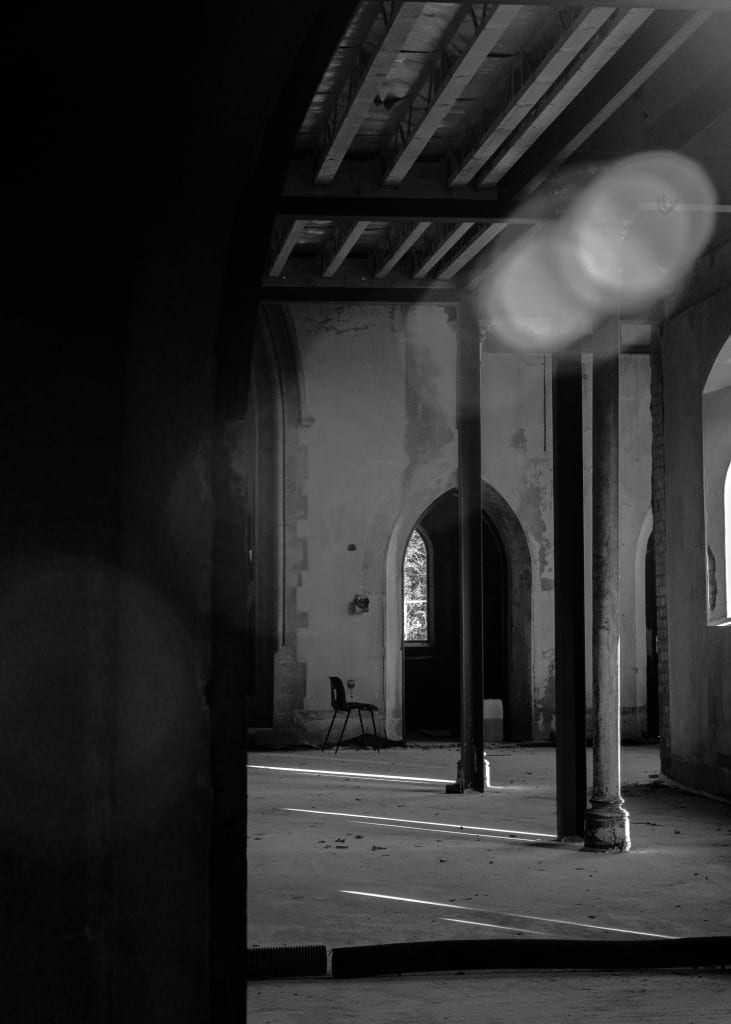‘You are here’ – Home
“Where we love is home – home that our feet may leave, but not our hearts.” – Oliver Wendell Holmes, Sr.Research
Christian Richter
“Collecting moments, not things”Richter was born in the then German Democratic Republic. He begun to explore abandoned buildings after the fall of the Berlin wall in 1989, after his friend bought him his first digital camera. The series of photographs exploring abandoned spaces has led to Richter breaking into more than 1000 spaces worldwide. He developed a fondness for derelict buildings as he found them fascinating that people had just left them to rot. He finds beauty within the derelict spaces. His photographs are taken on a Canon DSLR camera often with a 16-35mm lens to capture the whole room and all it’s details.
“These places aren’t graves, they’re secret histories waiting to be read” “I adore old decaying architecture, the patterns and textures – they remind me that everything is impermanent”Mark Davis
Asylum – A Look Inside The Pauper Lunatic Asylum
“There they stand, isolated, majestic, imperious, brooded over by the gigantic water-tower and chimney combined, rising unmistakable and daunting out of the countryside – the asylums which our forefathers built with such immense solidity to express the notions of their day. Do not for a moment underestimate their powers of resistance to our assault”– Enoch Powell March 1961 when he made the first steps to make these once self-contained villages for the insane a thing of the past. (more here)
Urban Decay – Irina Souiki



My Photo shoot
My photo shoot surrounding the topic of ‘home’ is not based on my own home or what reminds me of home. Instead, I took a trip to a derelict asylum just outside of Sleaford to photograph the remains of what some people would have once lived in. The leftovers of what I discovered are what many people would have classed as their home and I have been inspired to explore the decay and outcome of what is left of Rauceby Hospital.

Some of my edited images
Final 6 Images – Evaluation

ISO 200 f10 1/60 10mm

ISO 400 f7.1 1/25 18mm

ISO 100 f7.1 1/60 18mm

ISO 100 f8 1/80 15mm

ISO 200 f6.3 1/80 10mm

ISO 800 F5.6 1/100 40mm
Evaluation
Lens’
During this shoot, I swapped lens several times depending on what I was focusing on. My favourite photographs were the ones I took with the 10-20mm lens because it captured the whole scene no matter how close I was to it. I managed to confine some good shots from different vantage points in order to display a range of compositions. I am pleased with all my final images and I have found it very difficult to say I have a particular favourite – I think they all work well together to depict the space I was exploring. I feel that there is diversity in my final 6 photographs as they all have different features and interesting things to look at.
Settings
I had an array of settings during this shoot. A lot of the environment was dark which meant I would have had better exposure if I took a tripod. However, due to the fast pace exploring, I did not have time to set up a tripod to do long exposures. In dark areas, I sometimes used flash. In my ‘look behind you’ final photo, I was able to balance my camera flat on the window ledge; therefore the camera was still enough, hence the shutter speed at 1/25. More light was let in to the camera, therefore the image was lighter. I benefited from shooting raw, as it made editing much easier to adjust the exposure, highlights, shadows, brightness and contrast. I tried to keep my ISO as low as possible (100), but sometimes, due to dark areas, I had to increase the ISO.
Overall
I felt that this brief was my favourite out of all of them, as I did something I wouldn’t usually do. I went out of my way to explore an old asylum and examine the decay of what could have been considered some people’s ‘home’. I think my final images show that I have clearly taking inspiration from the artists that I studied. When searching abandoned building photography, there were thousands of photographs and artists who influenced me to go out and do it myself. Within my final 6 images, majority are black and white. I made this choice because many images didn’t have much tonal value (many were plain beige and white). The ones I kept in colour were mainly close ups of textures to enhance the rotting walls and peel. The colours in these photos were particularly interesting, for example in the ‘I’m drowning’ image which has nice rusty reds and pale yellows. I personally think adding black and white effects to my photographs was appropriate as it also matches the theme of being ‘aged’ as it looks outdated. Black and white also improves the tones within the highlights and shadows, as I adjusted the contrast and clarity to make my images more crisp and detailed. To finalise, this shoot demonstrates that I have been imaginative in terms of linking my photographs to the idea of ‘home’. I really enjoyed taking them. The final outcome of my photographs are just what I wanted to display.























